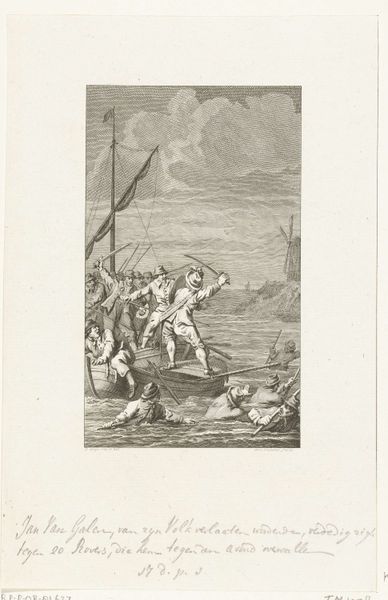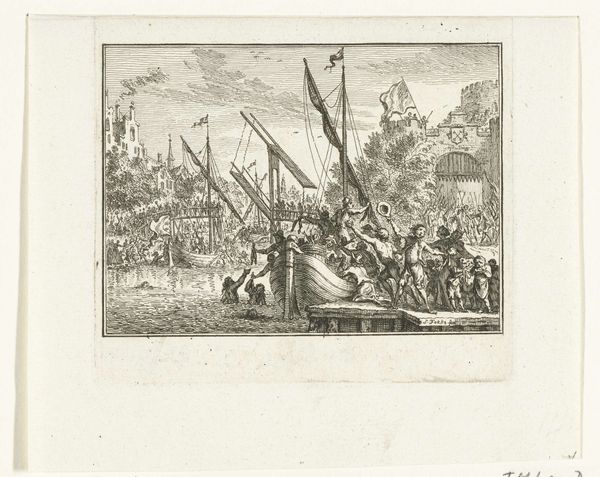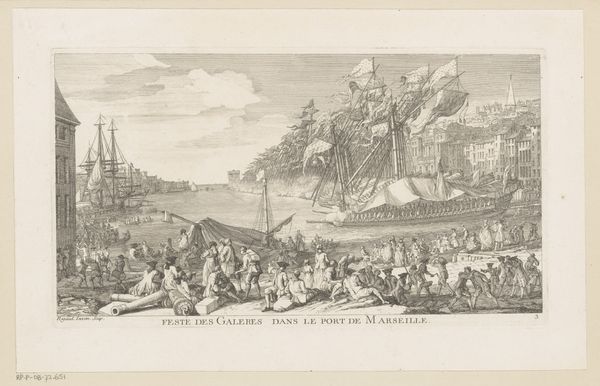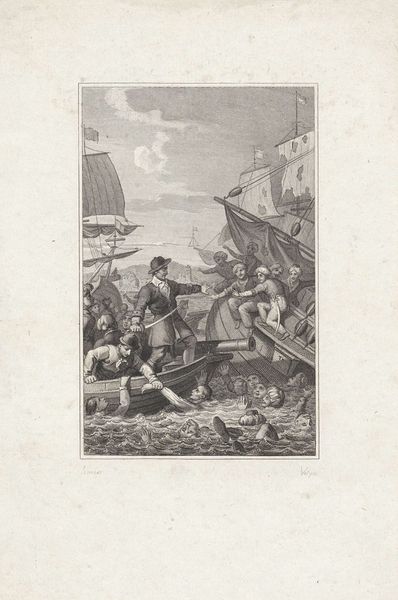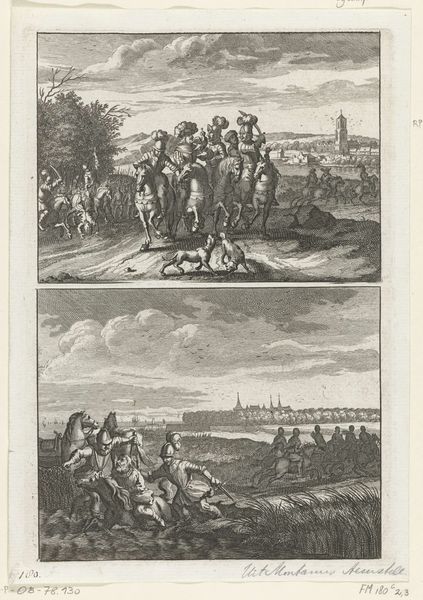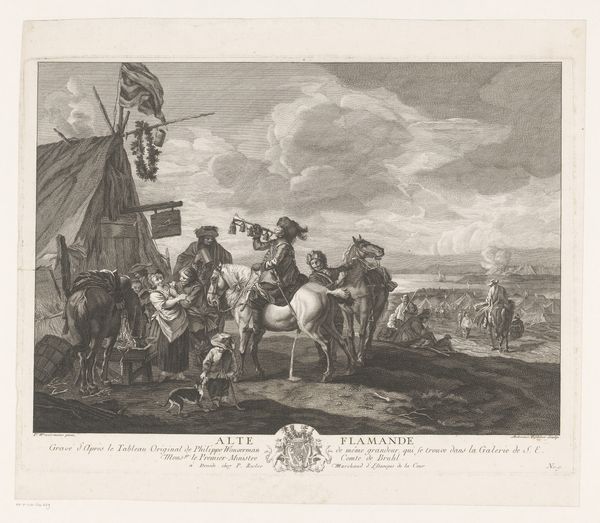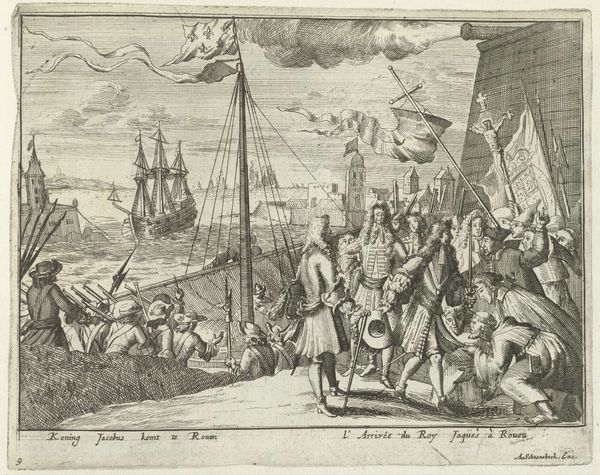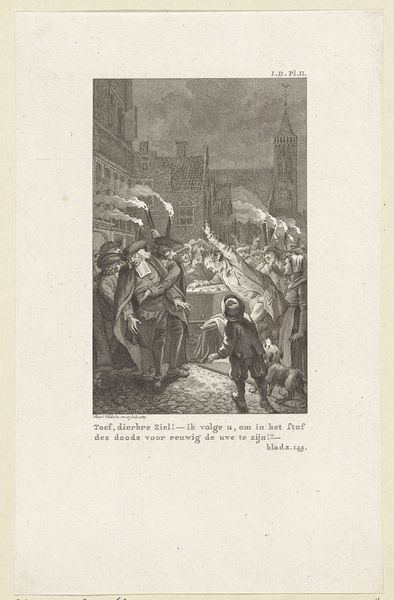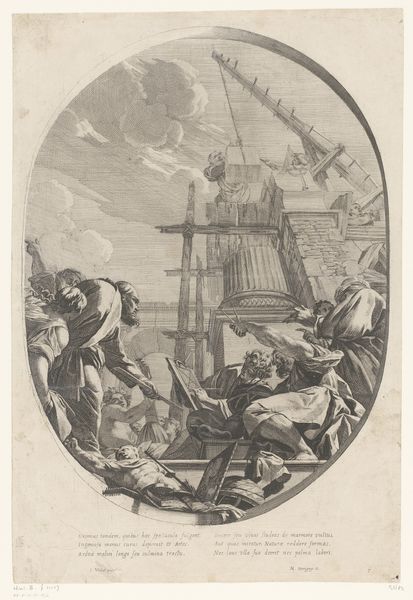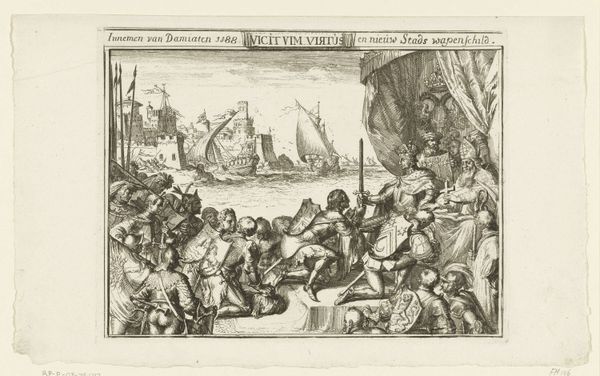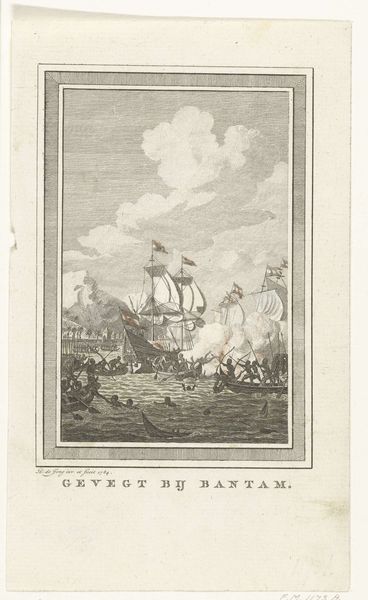
print, engraving
#
baroque
# print
#
old engraving style
#
history-painting
#
engraving
Dimensions: height 171 mm, width 89 mm
Copyright: Rijks Museum: Open Domain
Editor: This engraving, “Telemachus verlaat Egypte”, was created around 1755 by Jacques Philippe Le Bas. The scene is very active, with lots of figures in a busy harbor setting. What’s striking is the artist’s use of line to create depth and texture; what is your take on this composition? Curator: Formally, I am intrigued by the organizational principle at play here. Notice how the foreground figures, rendered with a higher density of lines, create a sharp contrast with the background, which is characterized by a lighter, airier touch. This juxtaposition structures the composition and invites the viewer's gaze to navigate the artwork in a calculated manner. Do you see a particular symbolic use for texture here? Editor: The engraving's use of light and shadow does seem to push and pull us through the story. I think the textures in the foreground also provide an intimacy; you want to lean into those more detailed figures. What does this piece say to you regarding its semiotics? Curator: In examining this image through a semiotic lens, observe the deliberate placement and interaction of figures as a series of signs. Their gestures, costumes, and relative positioning vis-à-vis one another communicate a nuanced social narrative. For instance, the characters attending to the merchant hint towards specific socio-economic exchanges, providing insights into the society depicted. Editor: That's fascinating! I hadn't considered the interplay of those signals before. It makes the scene far more vibrant. Curator: Precisely! Such meticulous attention to visual cues invites a deeper engagement, doesn't it? Hopefully, the experience facilitates fresh pathways to the subject. Editor: I think I agree. The interplay of forms here gives us the potential for interpretation and for the construction of narrative in the history depicted.
Comments
No comments
Be the first to comment and join the conversation on the ultimate creative platform.
